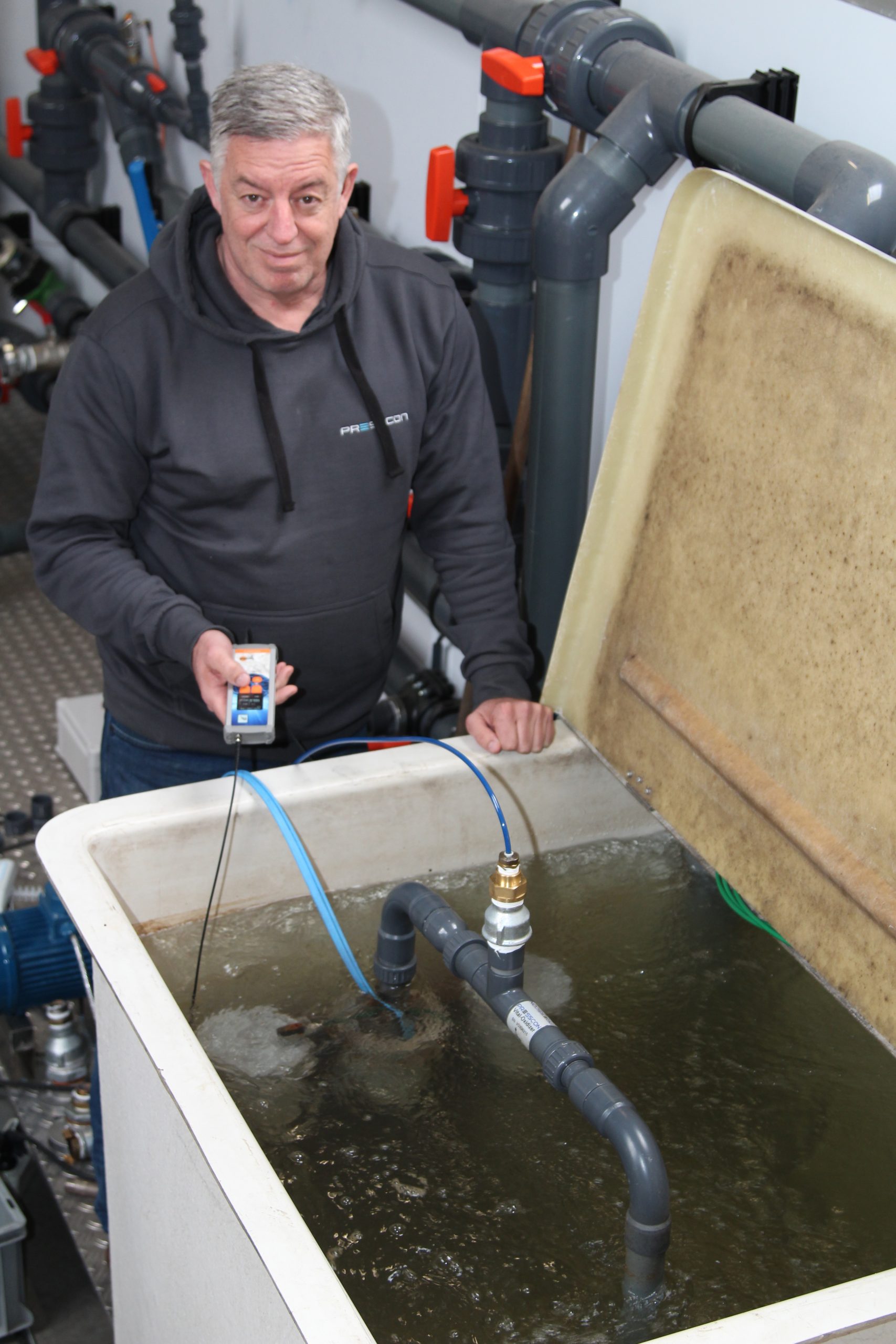In 2019, former grower John van Ruijven sold his first Vital Oxidizer to a practicing colleague. Hundreds are now in use to enrich irrigation water with oxygen in a simple but effective way. The proven concept also forms the basis of his consultancy practice, which focuses on sustainable cultivation methods. Sensors visualize the progress and results.
We meet John at his test line in Presscon's production hall in Honselersdijk, where the Vital Oxidizer was conceived and developed years ago. Since 2019, he has been selling the aeration concept for water to a wide group of customers through his own company JVR Tecmar. Greenhouse horticulture is by far the most important part. Due to his dedicated efforts, supplemented by positive reports in the trade media, the sales figures skyrocketed.
Vital Oxidizer pump
“Here I test the sets before they go to the customer,” explains the Westlander, holding an oxygen sensor in a tub of water that is brimming with vitality. “Customization is always involved, but the principle is very simple. Immediately Vital Oxidizer pump we bring extra oxygen into the water. By properly adjusting the ratios of pressure, back pressure and pipe diameter, an intense vortex is created and the fine air bubbles – you can also call them nano bubbles – remain in solution for a very long time. We call it vitalized water.”
Saturated with oxygen
Vitalized water offers multiple benefits, especially for growers. Firstly, such water keeps the entire water system clean, without the use of chemical agents such as chlorine or hydrogen peroxide. Bacteria and other micro-organisms can no longer attach themselves to the inside of pipes, drippers, filters and valves. This is how we create an aerobic environment. This also reduces the water-side disease pressure. “At least as important is the fact that the plant roots receive water saturated with oxygen,” continues Van Ruijven. “An active root system consumes oxygen and there is no shortage of it thanks to this system. Not even for the rear plants in the last tap section. Even in drain wells, in which the excess water is collected after an irrigation cycle, we measure oxygen percentages of up to 120%. In a conventional water system, percentages of less than 50% are no exception.”
Resilient cultivation
Unnecessarily, the former grower notes that a healthy root environment is necessary to support the natural resilience of crops. “Fortunately, that is something that growers are increasingly paying attention to,” he says. “A resilient crop is less susceptible to diseases and pests, which means that the use of crop protection products can be significantly reduced. The crop is also less sensitive to stress situations such as high irradiation, there are fewer problems with the absorption of nutrients and photosynthesis is more efficient. In other words, vitalized water helps growers to produce more at a lower cost.”
Follow permanently
Those are claims that don't lie. Can Van Ruijven also substantiate them? “I certainly can, but I'm not really telling you anything new. Researchers and growers have already demonstrated these effects often and in numerous crops. With sensors, this is no longer so difficult. Take this oxygen meter,” he says, taking the probe out of the water. “This allows you to objectively determine the oxygen content at any location in a water system or substrate. Continuously if desired. If you connect the meter to a Senbox, the measurement results are sent real-time and wirelessly to the central computer and displayed graphically. This way you can continuously monitor the water quality.”
Robust sensors
These and other sensors, such as a redox meter, fluorescence and photosynthesis sensors, help Van Ruijven and his customers to monitor growing conditions and crop performance and efficiently manage cultivation. “We used to grow mainly by feel”, he sums up. “We then received measurement boxes for the climate and today growers and researchers have a whole range of sensors at their disposal. Sendot supplies robust sensors and excellent service. I really enjoy working with them.”
